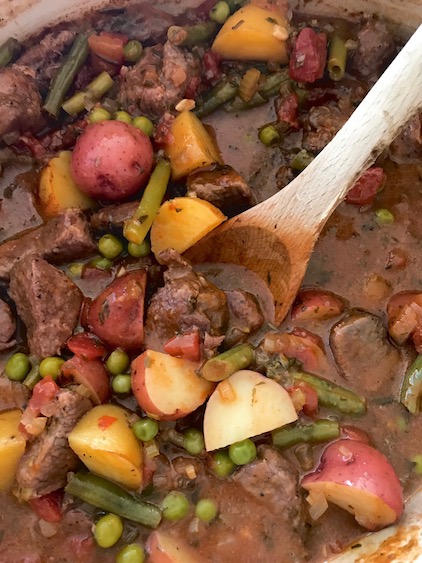MAPLE SEASON
Ciao’d with a slice of cinnamon streusel coffee cake.
When fall arrives in Northern California, those of us from the Northeast go wild for the snippets of autumn color that illuminate the Japanese maple, ginkgo and persimmon trees. These trees are diminutive in size but they carry their voluptuous colors well. “We finally have a season!” we exclaim to fellow Nor’easters at the market, in the gym, around the neighborhood. As if the back of the year, punctuated by glittering rain, luminous sunlight, shawls of fog and salty bay breezes, was hard labor.
As our East coast friends prepare for the first frost, removing screens from porches and doors, mounding decaying leaves around the hostas, and ensuring that the plow man has them on his schedule, we bask in the pumpkin glow of a generous, warm autumn. No cold or rain in sight – so far.
From where I sit and watch from the Adirondack chair on the terrace, the Japanese maple stretches its slim limbs, reaching for the autumn sky and the waning sun. The lower branches dip and drip their color but it’s the ruddy red leaves hanging on the new-growth branches at the top of the tree that catch my eye. When the breeze ruffles through, bringing the leaves to life, they shimmer like ruby earrings when a head tips in laughter. The finches and wrens chirp and bob from branch to branch.
Soon a billowing wind or weighty rain will send the leaves to the ground where they will mulch the grass until the gardener comes and blows them away. The summer birds will take flight to warmer climes. The crows remain though. Sitting heavily on the bare branches, they are camouflaged in the inky morning light.
I don’t mourn the falling leaves. Their fleeting lush green and then riotous rush of color leave behind a broad, fresh view of the western horizon. November rain will slick the branches. The tree will stand stoically in the thin light. The hummingbird feeders will sway silently. Once the woodpeckers return, they’ll visit – and rule - the suet feeder, scattering the nuthatches and brown creepers with their raucous laughing calls.
Japanese maples do not produce sap, as I am sure you know, but the change of season gets me thinking about maple syrup and the sugar maples from whence it comes. While sugaring season occurs in the spring, maple syrup enjoys its beyond-pancakes moment in the fall. It caramelizes roasted acorn squash, slicks bacon (you’ll never go back), glazes holiday ham. It’s a natural complement to other sweet flavors. Hence these Maple-Chocolate Chip Blondies. I gave a batch to my college son at Family Weekend. “They’re the bomb, mom,” which means he thoroughly approved. I think you will, too.
Note: if you’re looking for an alternative or a complement to Thanksgiving pie, these blondies are just the ticket. Make them now and freeze until the big day.
🍁. 🍁. 🍁
MAPLE CHOCOLATE CHIP BLONDIES
Makes sixteen 2” blondies
1 1/4 cups unbleached flour
3/4 teaspoon salt
1/2 teaspoon baking powder
6 tablespoons unsalted butter
3/4 cup light brown sugar
1/3 cup maple syrup
2 large eggs, lightly beaten
2 teaspoons vanilla extract
1/2 cup walnuts, coarsely chopped
1/2 cup bittersweet chocolate chips
Preheat the oven to 350F. Lightly grease an 8-inch square pan.
In a medium bowl, whisk together the flour, salt, and baking powder.
Melt the butter and brown sugar together in a saucepan over low heat or in a heatproof bowl in the microwave. Remove from the heat and stir in the maple syrup. Transfer to a large bowl, let cool, and then add the eggs and vanilla and stir to combine.
Fold the flour mixture into the butter mixture being careful not to over mix. Stir in the nuts and chocolate chips.
Pour the batter into the prepared pan. Bake until the top is golden brown and shiny, about 20 to 25 minutes. Do not overbake. A bit of a jiggle in the center is okay. Remove from the oven and cool on a rack and cool to room temperature before cutting. Recipe slightly adapted from King Arthur Flour.
Note: Store the browning at room temperature for up to one week, or in an airtight container for up to 3 months.














